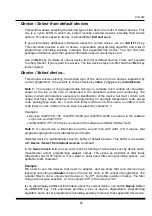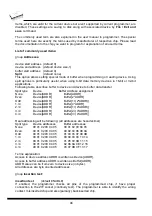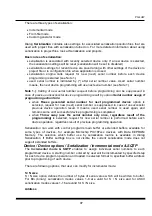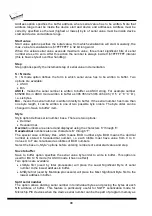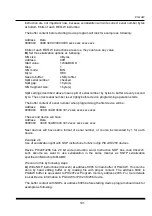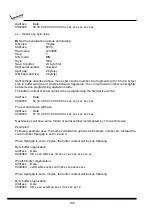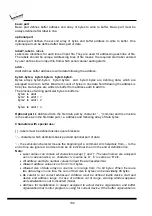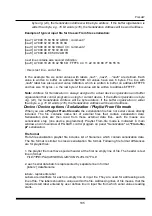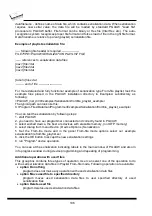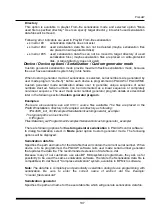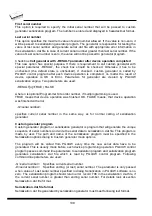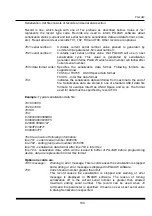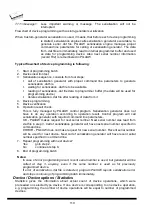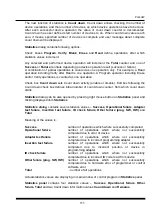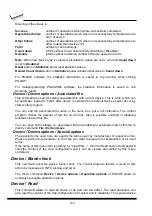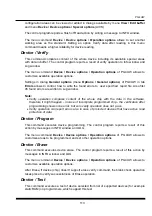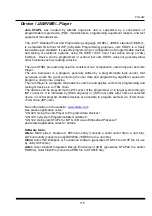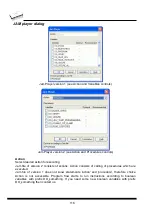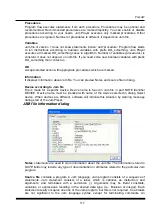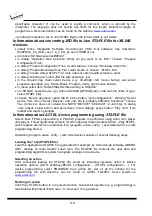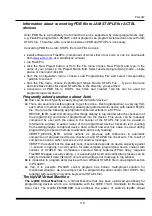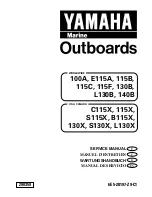
104
basic part
Basic part defines buffer address and array of bytes to write to buffer. Basic part must be
always defined after label in line.
optional part
Optional part defines the second array of bytes and buffer address to write to buffer. One
optional part can be defined after basic part of data.
label
1
, label
n
- labels
Labels are identifiers for each line of input file. They are used for addressing each line of file.
The labels should be unique. Addressing lines of file means, the required start label entered
by user defines line in input file from which serial values reading starts.
addr -
Addr defines buffer address to write data following the address.
byte
0
..byte
n
, byte
0
..byte
m
, byte
0
..byte
k
-
Bytes arrays byte
0
..byte
n
, byte
0
..byte
m
and byte
0
..byte
k
are defining data, which are
assigned to write to buffer. Maximum count of bytes in one data field following the address is
64 bytes. Data bytes are written to buffer from address addr to addr+n.
The process of writing particular bytes to buffer is:
byte
0
to addr
byte
1
to addr +
1
byte
2
to addr +
2
....
byte
n
to addr +
n
Optional part
is delimited from the first data part by character “ , “ (comma) and its structure
is the same as in the first data part, i.e. address and following array of data bytes.
Characters with special use:
[ ] - labels must be defined inside square brackets
',' – character which delimiters basic part and optional part of data
‘;’ - the semicolon character means the beginning of a comment. All characters from „;„ to the
end of line are ignored. Comment can be on individual line or in the end of definition line.
Note:
Label names can contain all characters except ‘[‘ and ‘]’. The label names are analyzed
as non case sensitive, i.e. character ‘a’ is same as ‘A’, ‘b’ is same as ‘B’ etc..
All address and byte number values in input file are hexadecimal.
Allowed address value size is from 1 to 4 bytes.
Allowed size of data arrays in one line is in range from 1 to 64 bytes. When there are
two data arrays in one line, the sum of their size in bytes can be maximally 80 bytes.
Be careful to set correct addresses. Address must be defined inside device start and
device end address range. In case of address out of range, warning window appears
and serialization is set to disabled (None).
Address for Serialization is always assigned to actual device organization and buffer
organization that control program is using for current device. If the buffer organization is
Summary of Contents for Dataman-40Pro
Page 7: ...Quick Start 7 Introduction ...
Page 12: ...12 Quick Start ...
Page 15: ...Detailed description 15 Detailed description ...
Page 16: ...16 DATAMAN 448PRO2 ...
Page 30: ...30 DATAMAN 48PRO2 DATAMAN 48PRO2C ...
Page 45: ...DATAMAN 40PRO 45 DATAMAN 40PRO ...
Page 54: ...54 DATAMAN MEMPRO ...
Page 61: ...Setup 61 Setup ...
Page 72: ...72 PG4UW ...
Page 141: ...PG4UWMC 141 PG4UWMC ...
Page 154: ...154 Installation procedure customized ...
Page 159: ...Common notes 159 Common notes ...
Page 171: ...Troubleshooting and warranty 171 Troubleshooting and warranty ...


